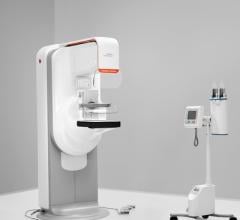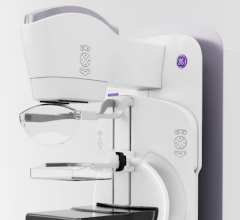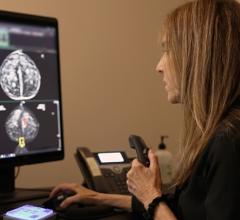
The Endomagnetics' Magtrace and Sentimag Magnetic Localization System uses magnetic detection during sentinel lymph node biopsy procedures to identify specific lymph nodes, known as sentinel lymph nodes, for surgical removal.
July 24, 2018 — The U.S. Food and Drug Administration (FDA) cleared a magnetic device system for guiding lymph node biopsies in patients with breast cancer undergoing mastectomy. The Magtrace and Sentimag Magnetic Localization System uses magnetic detection during sentinel lymph node biopsy procedures to identify specific lymph nodes, known as sentinel lymph nodes, for surgical removal. The FDA granted approval of the Sentimag System to Endomagnetics Inc.
“Sentinel lymph node biopsies are crucial for determining whether a patient’s breast cancer has spread and helping the provider determine the most appropriate course of treatment,” said Binita Ashar, M.D., director of the Division of Surgical Devices in the FDA’s Center for Devices and Radiological Health (CDRH). “Currently, a sentinel lymph node biopsy is performed after injection of radioactive materials and/or blue dye. This magnetic system we’re approving today will offer patients undergoing mastectomy an option for their sentinel lymph biopsy procedure that does not require the injection of radioactive materials.”
Watch a video illustration of how the technology works.
Sentinel lymph nodes are the first lymph nodes to which cancer cells are most likely to spread from a primary tumor. For patients with breast cancer, testing the sentinel lymph nodes indicates whether the cancer has spread from the breast. A sentinel lymph node biopsy is used to identify, remove and examine lymph nodes to determine whether cancer cells are present.
The system is comprised of a sensitive magnetic sensing probe and base unit designed to detect small amounts of Magtrace, the magnetic tracer drug that is injected into breast tissue. The Magtrace particles travel to lymph nodes and become physically trapped in them, facilitating magnetic detection of the lymph nodes. Following the injection of Magtrace, the Sentimag probe is applied to the patients’ skin in areas closest to the tumor site containing the lymph nodes. The sensing of the magnetic particles is indicated by changes in audio and visual alerts from the base unit, enabling the surgeon to move the hand-held probe around the area of the lymph nodes, and locate the sentinel lymph node or nodes (if there are more than one). The surgeon then makes a small incision and removes the node, which is checked by a pathologist for the presence of cancer cells.
A negative sentinel lymph node biopsy result suggests that cancer has not spread to nearby lymph nodes. A positive result may indicate that cancer is present in the sentinel lymph node and may be present in other nearby lymph nodes and, possibly, other organs. This information can help a doctor determine the stage of the cancer and develop an appropriate treatment plan.
The FDA evaluated data from a trial of 147 patients with breast cancer to compare the Sentimag System to the control method of injecting patients with blue dye and radioactive materials together and using a gamma probe to identify the sentinel lymph node. Patients were administered both methods to compare lymph node detection rates. The lymph node detection rate for the Sentimag System was 94.3 percent while the control method detection rate was 93.5 percent. Overall, 98 percent of patients had the same detection rate with both the Sentimag System and the control method.
The most common adverse event reported include breast discoloration, which is reported to disappear after three months in patients who underwent mastectomy, bradycardia (slow heart rate) and potential allergic reaction to the magnetic materials. The Sentimag System is contraindicated in any patient with hypersensitivity to iron oxide or dextran compounds It is also not recommended for patients with iron overload disease or with a metal implant in the axilla or in the chest.
Magtrace may travel to regions away from the injection site such as liver or spleen, if injected directly into the bloodstream. In such cases the presence of Magtrace may cause image artifacts during magnetic resonance imaging (MRI). Magtrace residues have not been reported to produce artifacts affecting imaging in X-ray, positron emission tomography (PET) scans, computed tomography (CT) scans, PET/CT scans or ultrasound studies.
The FDA reviewed the Sentimag System application using a coordinated, cross-agency approach. The clinical review was conducted by the FDA’s CDRH in consultation with the Center for Drug Evaluation and Research and with support from the FDA's Oncology Center of Excellence, while all other aspects of review and the final product approval determination was conducted by the FDA’s CDRH.
For more information: www.endomag.com


 December 10, 2025
December 10, 2025 








